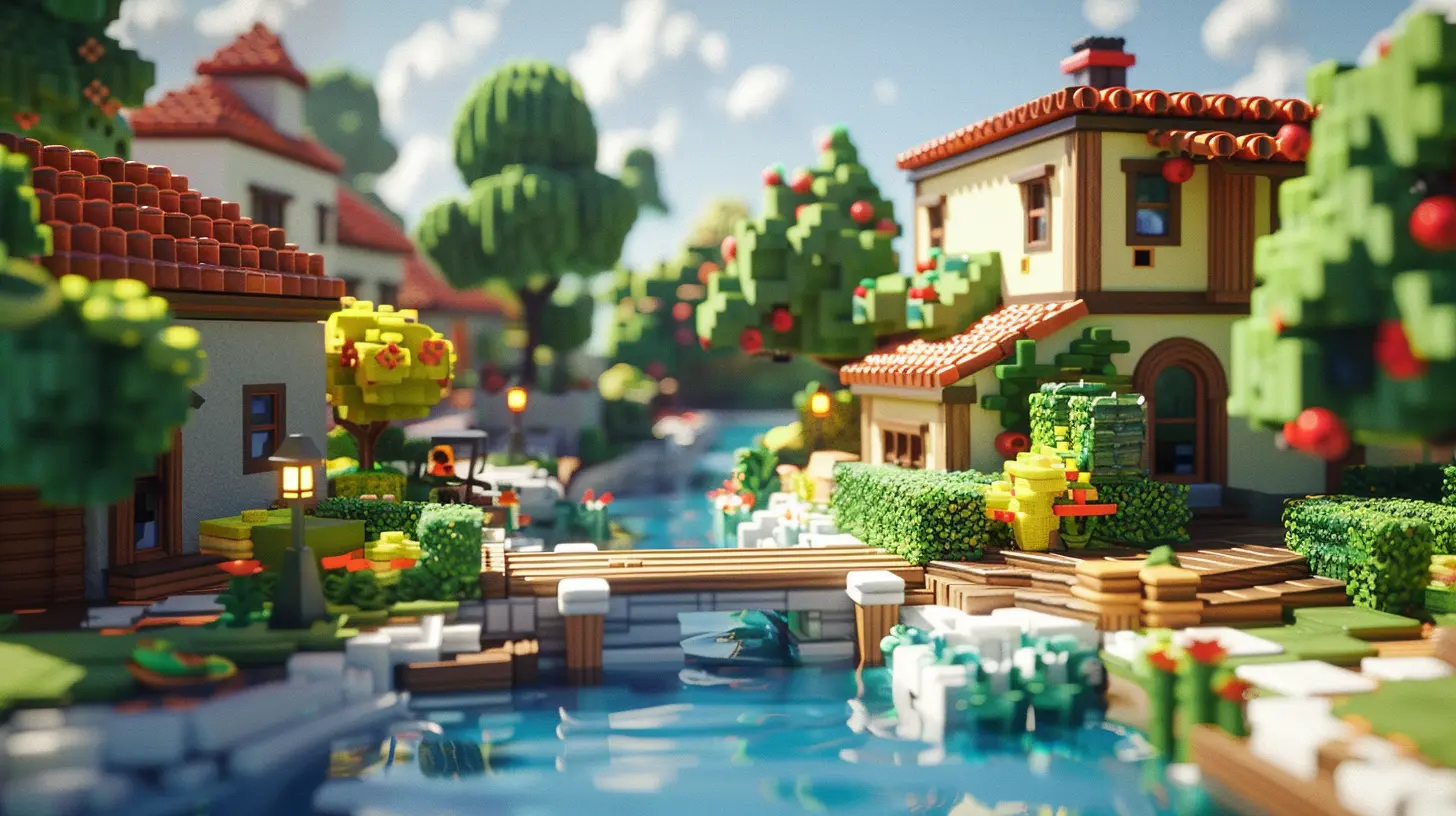In-Game Purchases and the Rise of Virtual Real Estate
2 June 2025
Alright, let’s talk about something that’s become a peculiar yet wildly entertaining part of our lives—in-game purchases and virtual real estate. You know, the stuff we swore we’d never spend actual money on until we caught ourselves pressing “Confirm Purchase” at 2 a.m. for a pair of pixelated sneakers or a plot of fake land. Don’t lie, we’ve all been there.
But what’s the deal with all this? When did we decide it was totally cool to shell out hard-earned cash for digital goodies we can’t physically hold or use? Is this the future, or have we collectively lost our minds? Let’s dive in, and I promise—no judgment here (unless you bought that $1,000 skin in Fortnite, then maybe a smidge of judgment). 
The Birth of In-Game Purchases: “Just One More Dollar”
First, let’s take a little trip down memory lane. Back in the day—cue the nostalgic music—you’d buy a game, pop it into your console, and that was that. No extra costs, no hidden fees, just you against the final boss. Then came the invention of DLCs (Downloadable Content). It started innocently enough—extra levels, new characters, stuff that felt worth the price tag.But somewhere along the line, developers realized, "Wait, people will pay for cosmetics?!" Enter the era of in-game purchases. Skins, mounts, emotes, and dances—everything became fair game. It’s like when you buy a burger, but suddenly someone’s charging extra for the ketchup. Yet, we still click "Buy Now." Why? Because we want that rare, shiny thing that screams, “Look at me, I’m cooler than you!”
Big names like League of Legends, Call of Duty, and Genshin Impact perfected this art form. They tempted us like candy in a checkout aisle. Want to win? Sure, you can grind for 300 hours…or swipe your card and save yourself the carpal tunnel. 
Enter Virtual Real Estate: The Monopoly Board Just Got Weird
Now here’s where things get even wilder—virtual real estate. That’s right, you can now become a proud owner of virtual land that doesn’t exist in the physical sense but costs more than your actual rent. What a time to be alive, folks.Virtual real estate is essentially parcels of land in digital worlds, often tied to a metaverse platform like Decentraland or The Sandbox. People are paying millions (yes, millions!) for prime virtual locations. Want to own a plot next to Snoop Dogg’s virtual mansion? That’ll cost you a cool $450,000. Meanwhile, my physical lawn is still a mess, and no one’s throwing money at me to be their neighbor.
Why are people buying this stuff? Well, think of it as investment meets FOMO. Some believe we're building the groundwork for the next internet revolution, where virtual spaces will be as valuable as physical ones. Imagine hosting a meeting in your digital skyscraper (because Zoom backgrounds are so 2020) or opening a virtual shop on the most foot-trafficked street of a metaverse. It’s essentially the 21st-century version of Monopoly, except instead of fighting over Boardwalk, we’re duking it out over pixels. 
Why Are We Spending Real Money on Fake Things?
Ah, the million-dollar question (quite literally). Let’s face it—humans are suckers for status, convenience, and shiny digital objects that make us stand out from the crowd. In-game purchases and virtual real estate, in a way, scratch that itch.1. Bragging Rights: You bought a $20 skin for your character in Overwatch. Is it ridiculous? Maybe. But does it feel good when your teammates say, "Whoa, where’d you get that?" Absolutely. Humans love flexing, even in digital spaces.
2. Time-Saving: Why grind endlessly for that sword when you can pay to get it instantly? Time is money, as they say, and for some, it’s easier to drop cash than suffer through hours of virtual labor.
3. The Vision (or the Hype): Virtual real estate buyers are banking on the idea that these spaces will be the next big thing. If the metaverse really takes off, owning prime digital land could be as valuable as owning a brownstone in Brooklyn. Or at least, that’s the logic. 
The Good, The Bad, and the “Are We Sure About This?”
Let’s break this whole phenomenon down into the proverbial pros and cons list because, honestly, it’s not all doom, gloom, and wasted cash.The Good
- Revenue for Devs: In-game purchases fund game development. Love your favorite game’s regular updates and new events? Thank the whales (aka big spenders) keeping it afloat.- Creativity: It enables developers to experiment with new features, skins, and items that might not exist without an additional revenue stream.
- Opportunities in Virtual Real Estate: For early adopters, virtual land could turn out to be a lucrative investment. Plus, it’s kind of fun to say, “I own a penthouse, but it’s in the digital clouds.”
The Bad
- Pay-to-Win: Nothing ruins a game faster than someone throwing cash at it to become unstoppable. It’s like playing dodgeball and realizing one guy brought a bazooka.- Addiction Risks: The “just one more dollar” mentality is dangerous. How many of us have lost track of how much we’ve spent on currency packs? Spoiler: Probably too many.
The Grey Area
- Virtual Real Estate Speculation: Sure, it sounds fancy now, but what if the metaverse fizzles out? You might end up owning a plot of virtual desert no one wants to visit. It’s a gamble—a high-stakes one at that.Are We Living in a Sci-Fi Novel?
Honestly, it feels like we’re creeping into Black Mirror territory here. Spending real money on digital assets sounds absurd until you realize…we’ve been doing it for years. Remember when people went nuts over FarmVille crops or spent hours building houses in The Sims? This is just the natural evolution.It’s also a testament to how much our lives are shifting online. We’re creating second lives in virtual worlds—avatars, properties, and all. If you think about it, Facebook didn’t rename itself Meta for kicks and giggles. They see the writing on the wall: the metaverse is the next frontier.
What’s Next for In-Game Purchases and Virtual Real Estate?
If the current trends are anything to go by, don’t expect this craze to slow down anytime soon. In fact, it’s probably going to get weirder. We’ll likely see:- Fully Immersive Experiences: Think Ready Player One, but with a lot more microtransactions.
- Mainstream Adoption: If people are paying six figures for virtual land now, imagine what happens when everyone and their grandma joins the metaverse.
- Regulations (Maybe?): Governments might step in to ensure buyers aren’t throwing their life savings away on overly marketed virtual dreams.
Final Thoughts: Is It Worth It?
So, should you spend your paycheck on in-game cosmetics or virtual land? That’s entirely up to you, my friend. Just remember, it’s all about balance. If buying that neon hoverboard or owning a slice of the digital universe sparks joy, then by all means, go for it. But don’t forget to pay your actual rent first (your landlord doesn’t accept metaverse currency…yet).In the end, whether we’re talking about in-game purchases or virtual real estate, one thing’s for certain: the line between our digital and physical lives is getting blurrier by the second. And honestly? It’s kind of thrilling, even if it’s a little bonkers.
all images in this post were generated using AI tools
Category:
In Game PurchasesAuthor:

Lana Johnson
Discussion
rate this article
3 comments
Oren Rivera
What an exciting read! The rise of virtual real estate adds a whole new layer of creativity and investment in gaming. It’s fascinating to see how players can shape their own worlds and experiences. Here’s to more joyful adventures and opportunities in the ever-evolving landscape of gaming! 🎮✨
June 19, 2025 at 4:02 AM

Lana Johnson
Thank you! I'm glad you enjoyed the article. The potential of virtual real estate really does open up endless creative possibilities for both players and investors! 🎮✨
Kason McDowell
This article brilliantly explores how in-game purchases are transforming gaming into a lucrative virtual real estate market, reshaping player experiences and economic dynamics.
June 7, 2025 at 4:38 PM

Lana Johnson
Thank you! I'm glad you found the article insightful. It's fascinating to see how in-game purchases are reshaping both player experiences and the gaming economy.
Zeke McEachern
Great insights on virtual real estate! It’s fascinating how in-game purchases are reshaping gaming economies and experiences.
June 7, 2025 at 3:57 AM

Lana Johnson
Thank you! I'm glad you found it interesting—virtual real estate is indeed transforming the gaming landscape in exciting ways!



